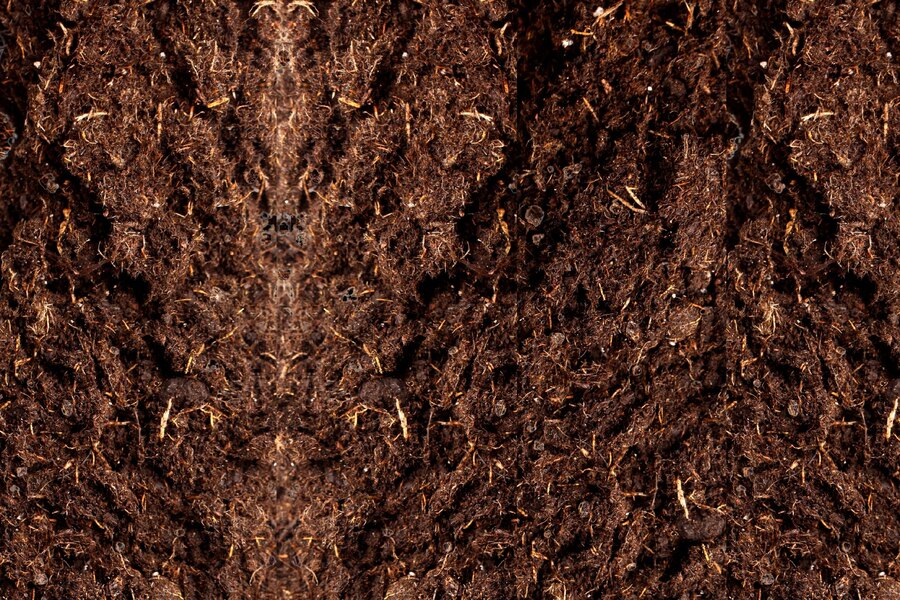Keeping your garden healthy through the hot, dry weeks of Shoreline’s summer can be a challenge. With temperatures high and rainfall low, plants rely heavily on the condition of the soil they grow in. That’s where topsoil comes in. It’s the upper layer of soil that holds nutrients, supports roots, and retains moisture. When it’s high quality, your plants grow stronger, stay greener, and resist stress better. When it’s not, even the most reliable watering routine and regular fertilizing won’t make up for the lack of support beneath the surface.
Many gardens in Shoreline face issues because the original topsoil has been removed during construction or has become compacted over time. This makes it harder for roots to stretch out and reach nutrients. If your garden’s looking uneven, thin, or patchy — even when everything else looks like it should be working — poor topsoil may be the reason. For homeowners who want healthier trees, fuller shrubs, or more productive vegetable beds, understanding and improving topsoil is one of the most reliable steps they can take.
Understanding The Importance Of Topsoil In Shoreline Gardens
Topsoil is more than just dirt. It’s the layer where plant roots pull nutrients, where water holds between rains, and where microorganisms break down organic matter to keep everything growing. Without strong, rich topsoil, plants have to work harder just to survive — let alone thrive.
What many Shoreline homeowners don’t realize is that their garden’s original topsoil may be missing or damaged. Whether it’s from past building activity or years of neglect, thin or poor soil can stunt growth and leave plants open to disease and dryness. Lawns start looking dull even after watering. Flower beds don’t bloom like they used to. And trees grow slower than you’d expect.
Shoreline’s coastal position can also bring in soil types that drain too quickly or pack too tightly. In gardens with lots of foot traffic or pets, the top layer can turn stiff, making it tough for roots to spread out. That’s why checking the health of your existing topsoil is worth the time — your plants may be showing early signs that the soil isn’t doing its job.
Identifying Poor Topsoil Conditions
There are several visible signs that your garden’s topsoil might not be performing well. Here’s what to look for before making any changes:
– Plants that grow unevenly or show weak stems
– Hard, crusty soil that’s difficult to dig into by hand
– Water that puddles or runs off instead of soaking in
– Lots of weeds but not much healthy growth from planted varieties
– Discoloration in leaves even with regular feeding
If you notice these issues, it may be time to take a closer look. One common situation we see is when a homeowner adds more fertilizer and water, expecting better results, but the garden doesn’t respond. That’s usually because the problem is rooted below — the topsoil isn’t supporting the plants the way it should.
Soil compaction is also a frequent issue in Shoreline. Whether from machinery, walking paths, or lack of aeration, soil that’s too dense blocks water and roots from moving freely. Over time, this limits how much plants can take in, no matter how rich the soil once was. Dry spots and excessive runoff after watering can be clues that the structure of your topsoil needs help.
Taking time to assess soil conditions now could prevent bigger issues down the road. It’s more than just surface-level damage — healthy topsoil supports everything above it.
Choosing The Best Topsoil For Your Garden
When it’s time to fix or upgrade your topsoil in Shoreline, start by looking for a blend that fits your plant’s needs and the layout of your space. High-quality topsoil should have a mix of sand, silt, and clay to allow for drainage and nutrient retention. A deep, dark color usually shows it has enough organic matter to feed plants and hold water.
Not all topsoil is the same, though. The right type depends on your yard and what you’re growing. For example:
– Raised vegetable beds do well with loamy soil rich in compost
– Lawns benefit from screened topsoil that’s easy to level and rake
– Flower beds can use a blended soil with slow-release nutrients
– Areas with drainage problems may need sandy topsoil that doesn’t hold excess water
Before choosing, think about how much sunlight and shade your garden gets, what plants are struggling, and whether the ground seems hard or crumbly.
If you’re uncertain, our professionals can evaluate the site and recommend what works best for your conditions. Using the wrong topsoil mix could make the problem worse instead of better. The goal is to match the soil’s traits to your garden’s needs — not just dump a fresh layer and hope for the best.
Steps To Improve Your Garden’s Topsoil
Once you recognize that your garden’s topsoil in Shoreline needs help, the next step is to take action that leads to lasting results. You don’t want to throw more water or fertilizer at the problem only to get limited payback. Focusing on the soil layer itself is what makes the difference.
Start by testing the soil. This doesn’t require lab work. You can do a simple test by digging into the top six inches of soil and observing it. If it crumbles easily and has a deep brown or black color, it’s likely in good shape. On the other hand, if it feels sticky, sandy, or looks gray and dry, it may need correcting. Pay attention to how water behaves, too. If it runs off quickly or pools without soaking in, it’s time to intervene.
Here are steps to improve your topsoil:
1. Remove debris and compacted material from the top of your garden beds.
2. Loosen the existing soil with a shovel or garden fork to improve airflow and root access.
3. Add a layer of high-quality topsoil that fits your plant type—about 2–4 inches, depending on the area.
4. Blend the new topsoil slightly into the current soil to avoid layering and improve root transition.
5. Consider mixing in organic material like compost if the area needs a nutrient boost.
For established areas like lawns, you can apply a light topdressing of topsoil and let it settle in slowly with watering. For new beds, it might help to apply the topsoil before any planting begins. In more compacted areas, such as yards that see regular foot traffic, topsoil improvement often needs to happen every season or two.
Using the right materials and technique will save time and make your watering and feeding efforts go farther. Getting the base layer right means less correction down the line.
Long-Term Maintenance For Optimal Plant Growth
Once your garden’s topsoil has been improved, keeping it healthy becomes part of regular yard care. Topsoil health isn’t static—it changes with weather, watering habits, and foot traffic. That’s why easy, consistent upkeep can go a long way towards protecting your investment and keeping your plants in top shape.
Here’s how to stay on top of soil maintenance in Shoreline:
– Avoid overwatering, especially during dry summers, since too much water can compact the soil or wash nutrients away
– Don’t walk over wet garden beds or lawn edges to prevent compressing the soil
– Mix in organic matter each year, especially in growing zones that experience high plant turnover
– Use mulch as needed to help moisture retention and limit surface drying
– Keep an eye out for thin patches or repeated dry spots—they could be signs that soil quality is dropping again
Timing also matters. Summer is a period when your soil works hardest to keep plants hydrated and stable. Without some light attention during this time, it may lose the nutrients and structure that make growth possible once the cooler months return.
Ideally, schedule a garden review at the end of summer to check how the topsoil held up. Has it been drying out too fast? Did any planting areas show signs of stress? Keeping tabs like this puts you in control and gives you options before bigger soil repair becomes necessary.
Keeping Your Shoreline Garden Strong
Topsoil maintenance isn’t just about fixing problems when they arise—it’s about setting your garden up to succeed for the long haul. Every plant in your yard depends on the quality of the soil underneath it. If that layer breaks down, everything from your grass to your trees will show the effects.
Investing energy in getting your Shoreline topsoil where it needs to be pays back visibly through stronger, more reliable plant growth. It saves time spent troubleshooting patchy beds and reduces overreliance on water supplements or fertilizers. When the soil is right, everything else falls into place faster.
Taking the time now to evaluate, amend, and protect your topsoil is one of the most doable yet important things you can do for your garden. Whether you’re planting fresh shrubs, growing summer veggies, or improving curb appeal, healthy soil is always step one. With consistent checking and proper upkeep, your yard can stay healthy through the seasons.
Enhance your garden’s performance with quality topsoil in Shoreline from Northwest Landscape Supply and see the difference a well-maintained garden can make this summer. For a tailored solution to address your garden’s challenges and keep your soil in top shape, please contact us today.

